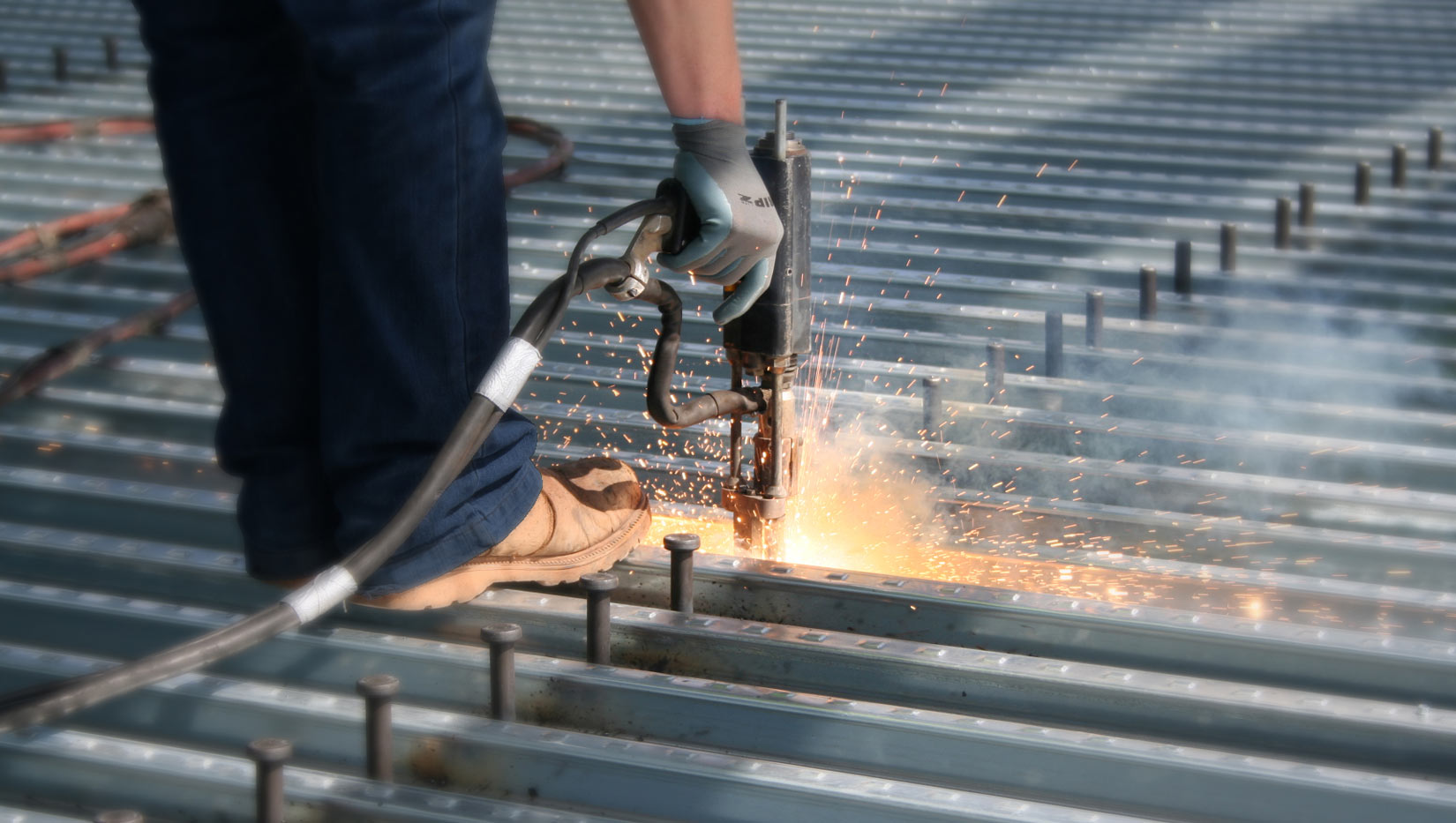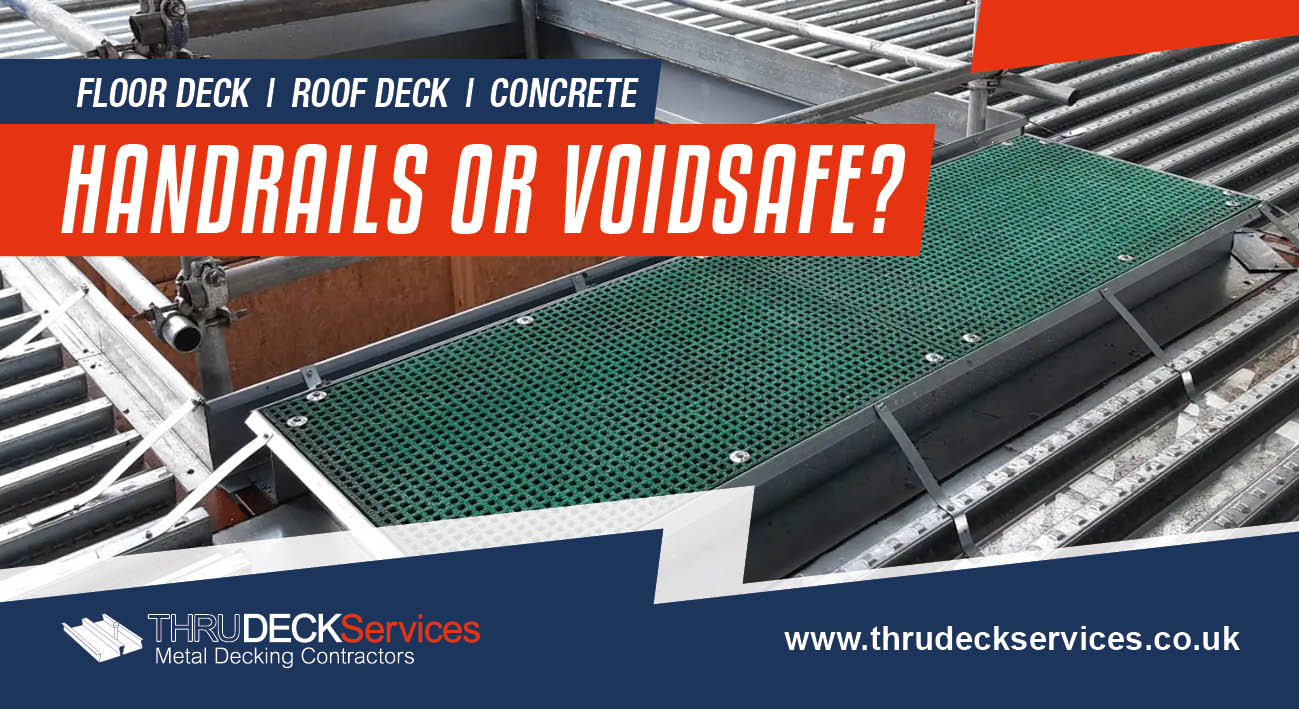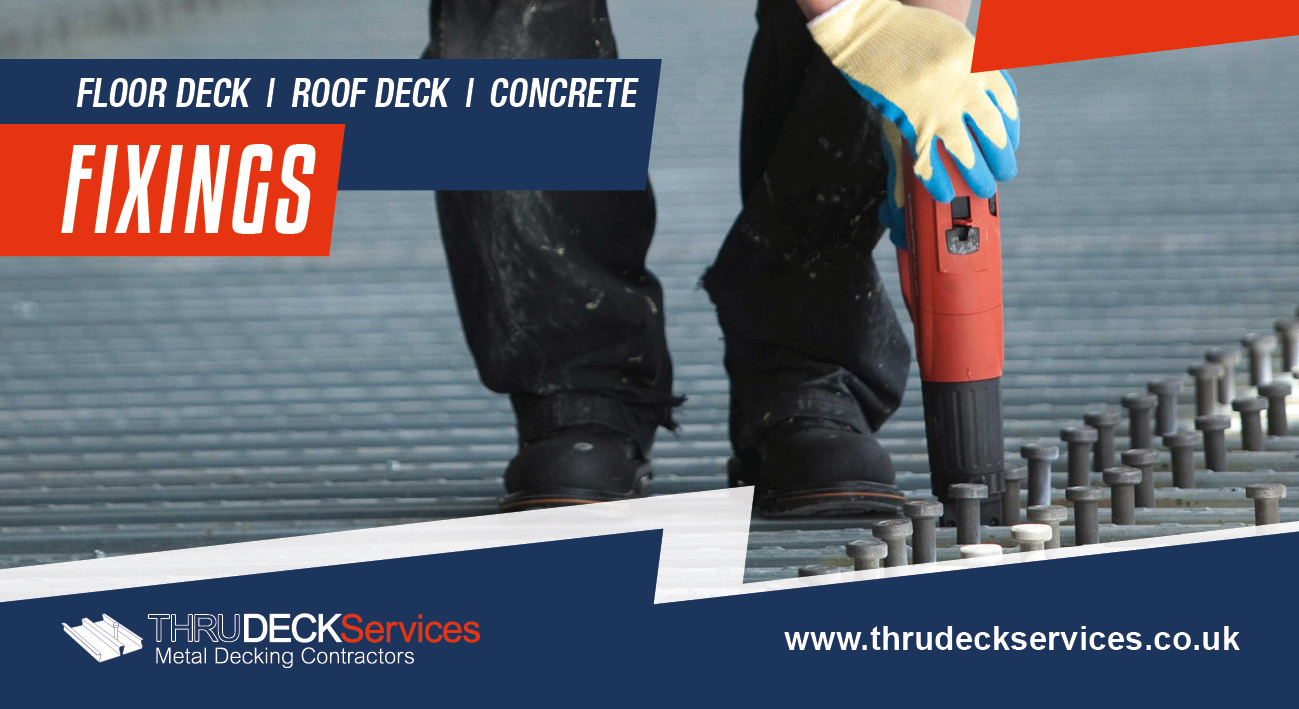Site Preparation – Shear Stud Welding
Before starting the shear stud welding process, there are several factors that should be taken into account to make sure everything is done correctly. Here are some of the best practices we use to ensure effective welding.
Unpainted top flanges
To make sure that the welding is as effective as possible, there needs to be some preparation to the beams. The top flanges must be free from any type of paint, grease, loose rust or any other coating that could reduce the final weld strength.
Top tip: When masking the top flange before painting any areas around it, the full top flange should be masked. Where paint is planned to be at the toes of the beam flange, this should extend no more than 15mm from the beam toe.
Mobile stud welding equipment
Stud welding is typically undertaken using purpose-built mobile stud welding rigs, operating Nelson rectifiers and diesel generators. When using this kind of equipment, it’s essential to select the right one based on the size and scale of the project and for Health and Safety considerations, they must always be used in accordance to their instructions.
For example, a rig with dimensions of 7m long, 2.5m wide and 4m high will require access and hardstanding to within 7.5m of the steel frame to ensure it can be safely earthed. If this isn’t possible due to site logistics or restrictions (the cable can only stretch 80m between the rig and stud welding tool), then an additional steel angle of around 50mm2 may be an option too.
Static generator
Many sites choose to have 415 volt 3-phase mains supply due to its low environmental impact. However, some large city centre contracts will have restricted access for a mobile rig or no mains supply at all. If this is the case, then a generator can be a great substitute – but it will need to be in a well-ventilated area and the Structural Engineer will need to think carefully about its location to avoid overloading the steel frame.
Test, test and test again
Pre-start testing
At the start of every welding shift, a Welding Procedure Qualification Record test (WPQR) must be completed and the settings used should fall within the parameters set out in our Welding Procedures Specification (WPS).
The WPQR test involves 10. No test studs. They’ll need to be bent to an angle of 30° from their original axis using a bending bar over the stud and forcing the stud in the beam’s span direction towards the nearest column. Should this test fail, you must reset the equipment, adjust the settings and repeat the test with replacement welded studs until there’s a pass. A record of the WPQR location and settings should then be marked on a QA record drawing which is a requirement of BS EN 14555:2014.
Top tip: The settings will differ for each site due to things like atmospheric conditions, weather, parent steel grade, cable distance and ambient temperature.
Surveillance testing
As the welding takes place, the ferrules will break away from the base of the stud to allow for a visual inspection. These broken ferrules can be left on the deck to be absorbed into the concrete poured later, and can be treated as inert aggregate. The shear studs are then ring tested by tapping the head of each one with a hammer and any that do not give a resonating ring sound will then need to be bend tested.
Bend testing must be carried out in the same way as the pre-start WPQR check, but to 15° instead. This should be carried out to either 5% or at least two studs per beam, whichever is greater and if any fail, the three studs either side should also be tested. Any failing studs will need to be replaced and a note marked on the QA record drawing too.
When testing shear studs, you should refer to:
- The manufacturer’s instructions
- BS EN1994-1-1
- BS5950: Part 3: Section 3.1
- BCSA Code of Practice for Metal Decking and Stud Welding
- National Structural Steelwork Specification
- BS EN ISO 14555:2014




